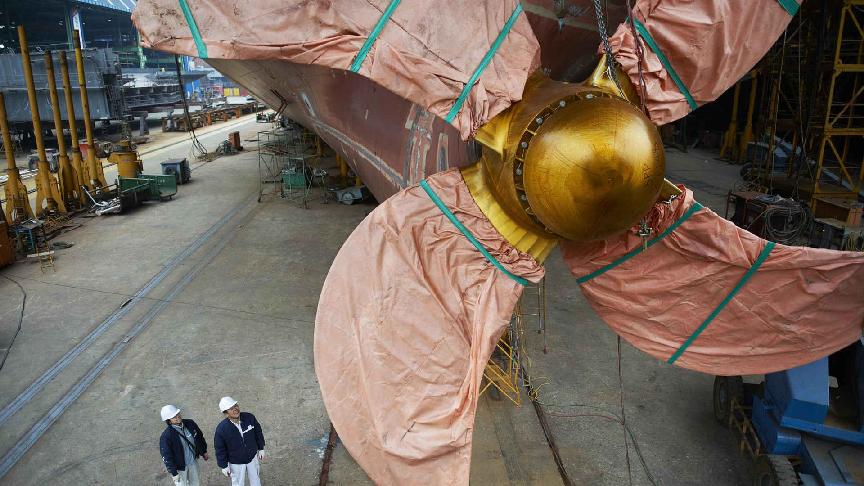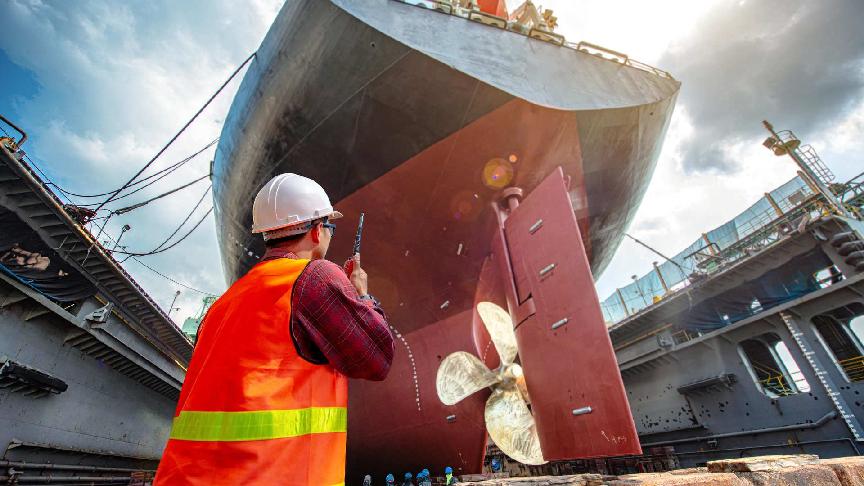As a leader in sea logistics, Kuehne+Nagel closely tracks and collects data on the movement of vessels, including actual arrivals and vessel delays. Kuehne+Nagel will be publishing a summary of this analysis in monthly Schedule Reliability reports based entirely on neutral data. This summary is available within SeaNews in seaexplorer as well as in myKN for all Kuehne+Nagel customers and myKN subscribers.
Global On-Time Performance
June’s global on-time performance witnessed a slight drop last month from 69.3% in May to 64.3%. The reliability of global vessels improved by 12 percentage points compared to January 2023, as illustrated in the figure below. The year-on-year development is quite significant, jumping almost 24 percentage points.

The global monthly average delay in the arrival of LATE vessels remained stable in June. The average for this category of vessels was 3.4 days last month, showing an improvement of 0.2 days only.
Similarly, the average delay in arrival of ALL vessels remained low. The average increased by only 0.1 days to 1.2 days. In comparison to June 2022, the average decreased by 50% from 2.4 days.

Reliability per Trade Lane
For the second month in a row, vessels on the Transatlantic trade achieved significant improvement in terms of reliability. The percentage improved by 9 percentage points approximately, from 64.7% to 73.8%.
June’s schedule reliability on the Transpacific trade was 52.6% and 68.2% on the Asia-North Europe trade. The trade lane with the highest on-time performance among all lanes shown in the figure below was the Mediterranean/Black Sea – South America with 89%. This has been the case for several months since the beginning of the year.
Conversely, the trade with the lowest on-time performance in June among all main trades was the Transpacific.

Reliability on the Transpacific
This month we take a look at the progress on the Transpacific. On the westbound of this trade, schedule reliability dropped sharply compared to last month by nearly 10 percentage points month-on-month, from 53.7% to 43.4%. This percentage is very close to the reliability level seen in February of this year.
While schedule reliability also dropped on the eastbound leg, the decrease was clearly smaller. The month-on-month difference only 2 percentage points. In May, the percentage reached 61.5% and dropped to 59.4% in June. Compared to last year, the improvement is higher by almost 30 percentage points.
The monthly average delay in the arrival of LATE vessels on both directions of this trade was 1.5 days. The average for ALL vessels was 3.3 days.
Conclusion
A slight drop was seen this month compared to May. Global on-time performance for June reached 64.3%, a progress of nearly 24 percentage points compared to last year.
While this is encouraging, Kuenhe+Nagel's Global Head of Sea Logistics Trade, Paolo Montrone, says, "in proper perspective in a market with much less congestion and bottlenecks compared to a year ago combined with high capacity and lower demand, still carrier networks operate with a ratio of 4 out of 10 vessels outside reliability standards."
The trade lane with the highest schedule reliability among main trade lanes was again the Mediterranean/Black Sea – South America with 89%. Among the three major trade lanes (Transpacific, Transatlantic,4 and Asia – North Europe), the Transatlantic had the highest performance at 73.8% and the Transpacific had the lowest rate at 52.6%.
Methodology
Calculating the on-time performance
To calculate the on-time performance of a service, Kuehne+Nagel uses vessel schedules from carrier(s) offering that service. Only carrier schedules that match our quality criteria are used for the schedule reliability calculation.
As carriers update schedules constantly, they become more accurate the closer vessels get to a destination port. For this reason, we have implemented a "schedule freeze period" of 14 days prior to actual vessel arrival. In other words, we benchmark the actual arrival with what carriers last announced 14 days earlier. To identify the actual time of arrival, Kuehne+Nagel consumes AIS (Automatic Identification System) vessel data. All vessels which arrive within a +/- 24-hour window at the port of destination compared to the last announced arrival are considered to be on time.
Assigning carrier services to multiple trade lanes
Many services operate on various trade lanes (e.g. a carrier service between Asia and North Europe also calls ports in the Middle East and or the Mediterranean), and therefore carrier services may be listed in multiple trade lanes.
Definition of trade lanes
There is no common standard for the definition of trade lanes. This means, depending on the source, you will find different trade lanes as well as different regions, countries and ports assigned to a trade lane. Kuehne+Nagel has defined its own way of mapping and has assigned ports to these trade lanes accordingly. On-time performances of vessels are captured in our reports on defined main trades, meaning trades moving large container volumes on vessels. Therefore, niche trades and services within one trade, called „Intra Trade“ services (e.g. Intra-Asia, Intra-Europe) are currently out of scope.






